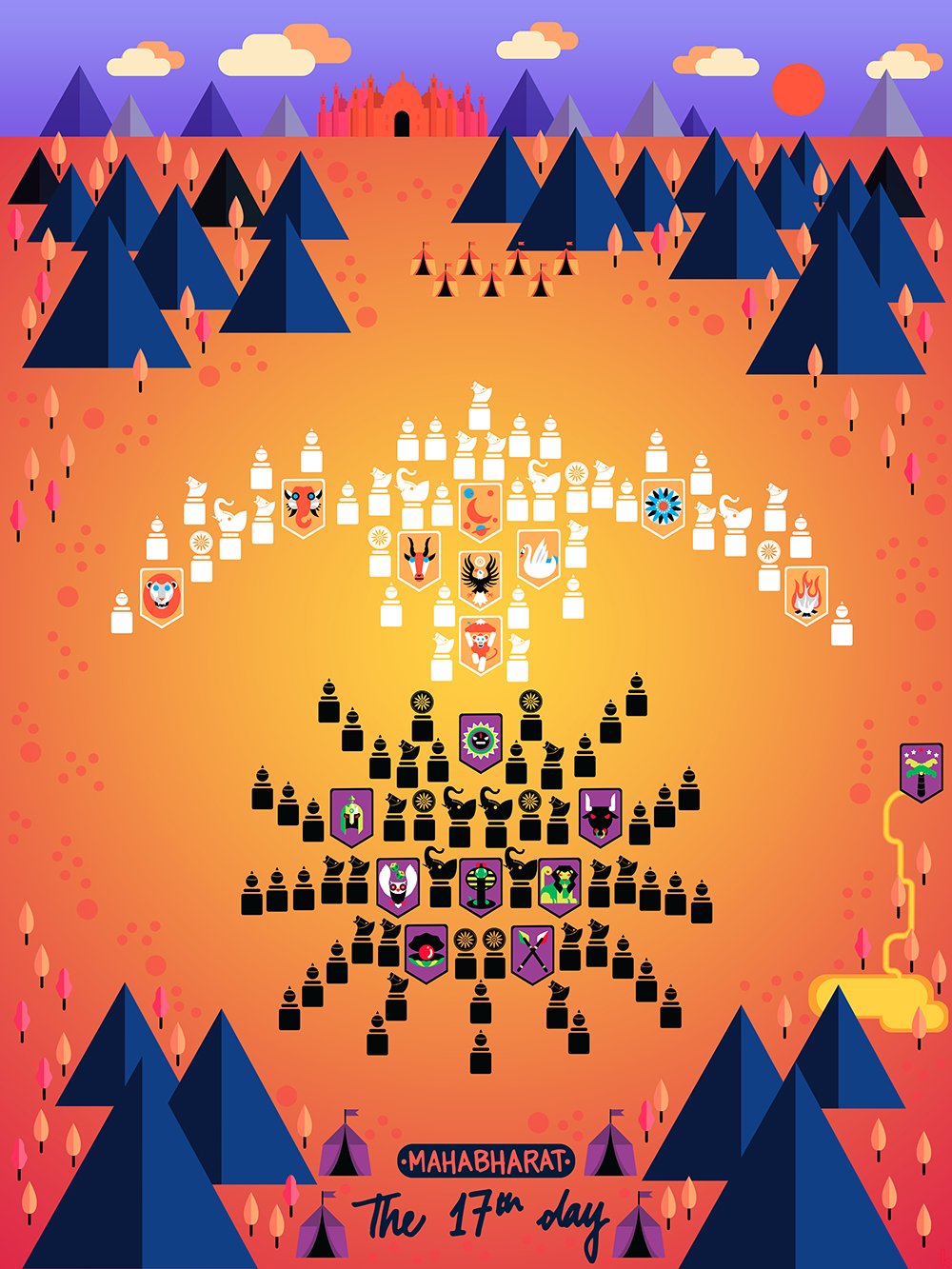The Story
The 17th day of the Mahabharata War pushed forward with the remnant Pandava Akshauhinis (a military unit, consisting of 1 elephant, 1 chariot, 3 horsemen and 5 foot soldiers, multiplied by a factor of 21870) and the Kaurava army.
After the fall of Drona, Karna took over as the Kaurava Commander-in-chief. He decided to employ the Surya Vyuha or the sun formation, with himself at the forefront. Duryodhana, the eldest Kaurava prince was placed at the center of the formation for his protection. He was surrounded by the other remaining warriors such as Shalya, Susharman, Kripacharya, Shakuni, Kritavarman and Ashwatthama.
Arjuna commanded the Pandava forces to form the Mahisha Vyuha, or the Buffalo formation, with the soldiers stretched out into massive horns. Bheema (Arjuna’s older brother) and Drishtadyumna (who was also the Commander-in-chief of the Pandava forces) led each horn, with Arjuna spearheading the face of the formation that would break into the enemy army. Drishtadyumna’s brother Shikandi and Satyaki (Arjuna’s student from the Yadava Vrishni clan) supported each horn. At the center of the formation was the King Yudhishtra (the eldest Pandava brother) and his youngest brothers Nakula and Sahadeva. On this day, Arjuna faced off against Karna one last time and killed him after a fierce battle.
Philosophy of the Formations
The Buffalo:
Horns function as an animal's weapon, and thus represent their strength and aggression. The durability of animal horns has long fascinated humans and has often stood as a symbol of salvation and immortality. The horns of an animal also represent protection and asylum when they protect their families from predators.
On the flip side, the horn can also be associated with the madness and rage of a charging animal that is defending its territory.
These philosophies reflect the mental state of the Pandavas in their desire to protect and regain the kingdom that they believe is rightfully theirs, but are also somewhat charging headlong into war without really thinking of the consequences of such an act (as is seen at the end of the battle, where their entire family is wiped out).
The Sun:
Mythologies from all around the world considered the Sun as the giver of light and supporter of all light in the world, with sun deities being worshipped in various cultures across history.
In culture and language, the Sun often symbolises enlightenment, life, power, positivity, truth and clarity of vision.
These philosophies reflect the mental state of Karna, whose banner is the sun, and was said to be born due to the blessing of the sun god. Karna set aside all his fears and inhibitions one last time to fight with a pure heart and clear mind, even though he knew he faced his death.
Map of the Battlefield
